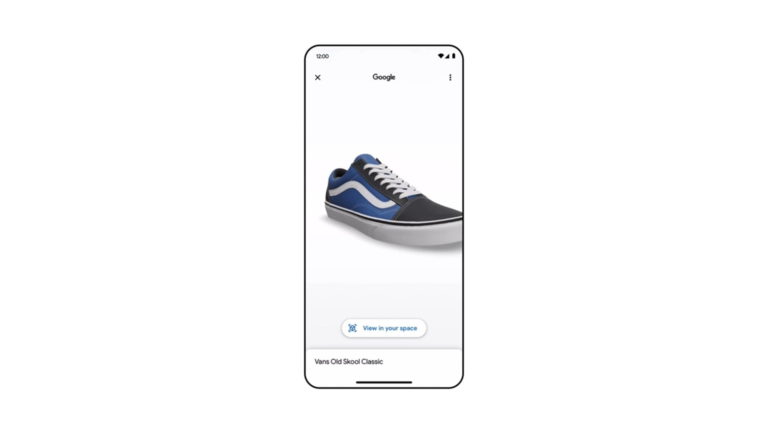
One product category in particular is beginning to gain traction in AR shopping: shoes. As we recently examined, Amazon has jumped into AR, starting with shoe try-ons. To be fair, Amazon has had several AR shopping experiments over the years but this is its latest play.
Then last week, Google launched something similar. A “View in my Space” option appears in some search results, letting users place a given shoe in front of them to spin and zoom it. It’s starting with a few brands like Saucony, Vans, and Merrell, with several more to come.
Like Amazon, this isn’t Google’s first AR move. Google Swirl is a tool offered to brand marketers to add 3D product visualizations to their search campaigns. If selling a product, they can add a 3D (desktop) or AR (mobile) try-on option. View in My Space is an offshoot of that.
For the latest shoe try-ons, the UX emphasizes details like colors and textures. The goal here is more informed consumers, which can lead to greater conversions, basket sizes, and fewer returns. The latter alone is a big pain point: to the tune of $550 billion annually.
Step in the Right Direction
One thing that jumps out from View in my Space is the omission of dimensional “try-ons.” Several AR product categories like cars and couches let you place an object in your space. Some style items like shoes, hats, and sunglasses conversely let you digitally fit them to your body.
Though that virtual try-on element is missing in Google’s AR shoe feature, it’s a step in the right direction. It’s all about getting users acclimated to AR shopping, which otherwise deviates from their habits. They need a nudge, and Google has the scale and exposure to do it.
In a similar sense, it’s about acclimating brand marketers. To that end, part of Google’s announcement involves automating 360-degree views of shoes that are generated using 2D stills and some machine-learning magic. This will soon be available to any shoe manufacturer.
This is a key step as one challenge for brands and retailers is generating 3D product models. They can be expensive and time-consuming to create (though they’re cheaper than traditional photo shoots). Moreover, it’s a new technology for busy marketing execs to learn.
Gain Footing
Going deeper into the 3D model challenge, we’re seeing other AR providers lower adoption friction for brands. For example, Apple’s Object Capture lets brands create 3D models by simply taking many 2D stills, which it similarly stitches together with some back-end magic.
Snap does something similar. And there’s an ecosystem of supporting players for 3D model construction (e.g., CG Trader), optimization (VNTANA), and eCommerce functionality (NexTech AR Solutions). This value chain will continue to materialize as AR grows.
Meanwhile, shoes are a logical place to start to get consumers acclimated to AR shopping. They have a combination of style/fit nuance, fanatic culture, and high consideration. This is where an extra confidence boost from dimensional visualization can boost conversions.
Beyond shoes, 3D and AR shopping have gained traction for furniture because of item bulk. It’s also popular for cosmetics, sunglasses, and anything that goes on your face. It’s still early, so we’ll see other categories emerge as consumers acclimate and as brands gain their 3D footing.






